Scythian
Scythian Bow
The Scythian bow was short yet powerful and proved ideal for mounted archery, a military approach that the Scythians mastered. Being one of the earliest fully composite bows, the Scythian bow remained in use for many centuries and its shape is very distinctive and easily recognized. The Scythians remain the most famous of all ancient nomadic groups. They inhabited the Eurasian Steppes from the 9th century BC to the 1st century BC. Importantly, they were among the first civilizations to deploy mounted warfare.
CLICK HERE TO BUY A SCYTHIAN BOW!

Scythian Empire
The Greeks viewed the Scythians as an intriguing barbarian group, noted in the writings of the Greek historian Herodotus. Many Scythian tribes grew powerful and wealthy because they controlled trade routes from East to West. The early Scythians were believed to have originated in Southern Siberia and gradually their lands stretched from the Carpathian Mountains in the West to China in the East.
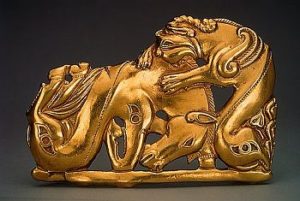
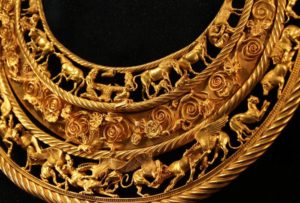
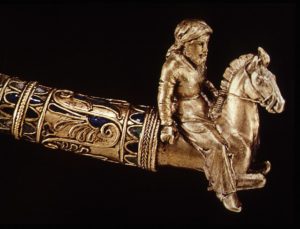
Scythian Art
The Scythians left artifacts in elaborate tombs throughout Eastern Europe. Burial sites contained fine gold plaques and ornaments that adorned royalty and allowed modern historians and archeologists to reconstruct their ancient world of splendor. Their artwork mostly depicted stags and horses and thus known as “animal style.”

Scythian Archery
Being masters of the horse and bow allowed the Scythians to be quite the formidable force on the ancient fields of battle. These ancient peoples would not have been able to thrive for centuries without effective means of waging war. Being nomadic and highly mobile also made it difficult for their enemies to fully subdue them. The case of the Scythian campaign of Darius I is a prime example. Darius moved in a large army to the borders of Scythian lands in 513 BC hoping to engage and destroy any resistance. The Scythians, however, would not take the bait and simply retreated scorching the earth behind them. The Persians were never able to engage in a pitched battle and with winter approaching and supply lines thinning out they eventually retreated.
A noteworthy article of interest pertaining to the Scythian bow and their archery is their unique bow-case, known as a gorytos. The gorytos was both a bow case and a quiver. The object was typically constructed out of leather, although more decorative versions of wood and metal were known to exist. The bow-case is closest to the archer and the quiver is situated on the outer section of the gorytos. The Scythians were also well known for their use of poison arrows. Snake venom and feces were apparently ideal for coating arrowheads. Below are an illustration and photograph of a Scythian gorytos.
.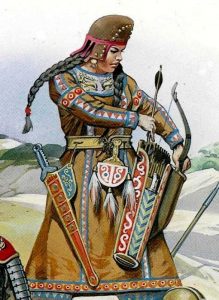
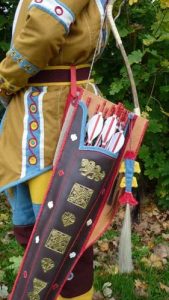
The Scythian Bow in Europe
The ancient Greeks were very familiar with the Scythian bow and it is accurately depicted on many Greek vases. The Scythians and other steppe nomads were known to be regularly recruited as mercenaries in the armies of their sedentary neighbors. The theme of archery is repeated in Greek mythology, with many deities, such as Apollo, Artemis, and Cupid being depicted as archers.

The Scythian Bow in China
Bows of the Scythian design were discovered in North-West China near the city of Urumqi. This area was along the Silk Road and it attracted many merchants and nomads over the centuries. The burials from where the bows were found are dated to approximately 600 BCE. They are well preserved and are clearly of Scythian design. It is quite astounding that the Scythians were active in places so far apart as ancient Greece and China. This article by ATARN (Asian Traditional Archery Research Network), describes various Scythian bows discovered in graves in Northern China.
Check out Armin Hirmer’s Review of The Flagella Dei Scythian Bow. Available HERE
CLICK HERE FOR BOOKS